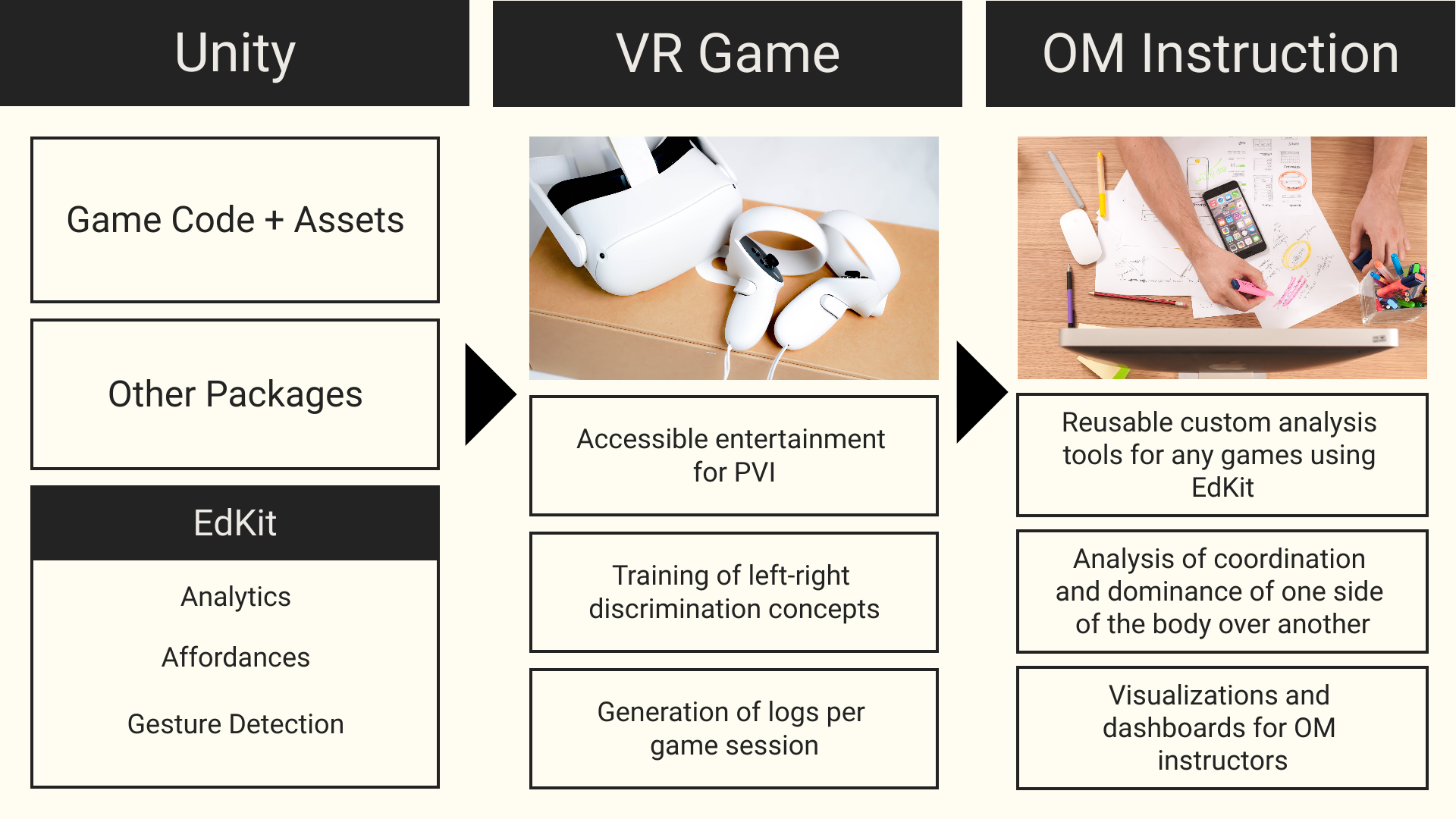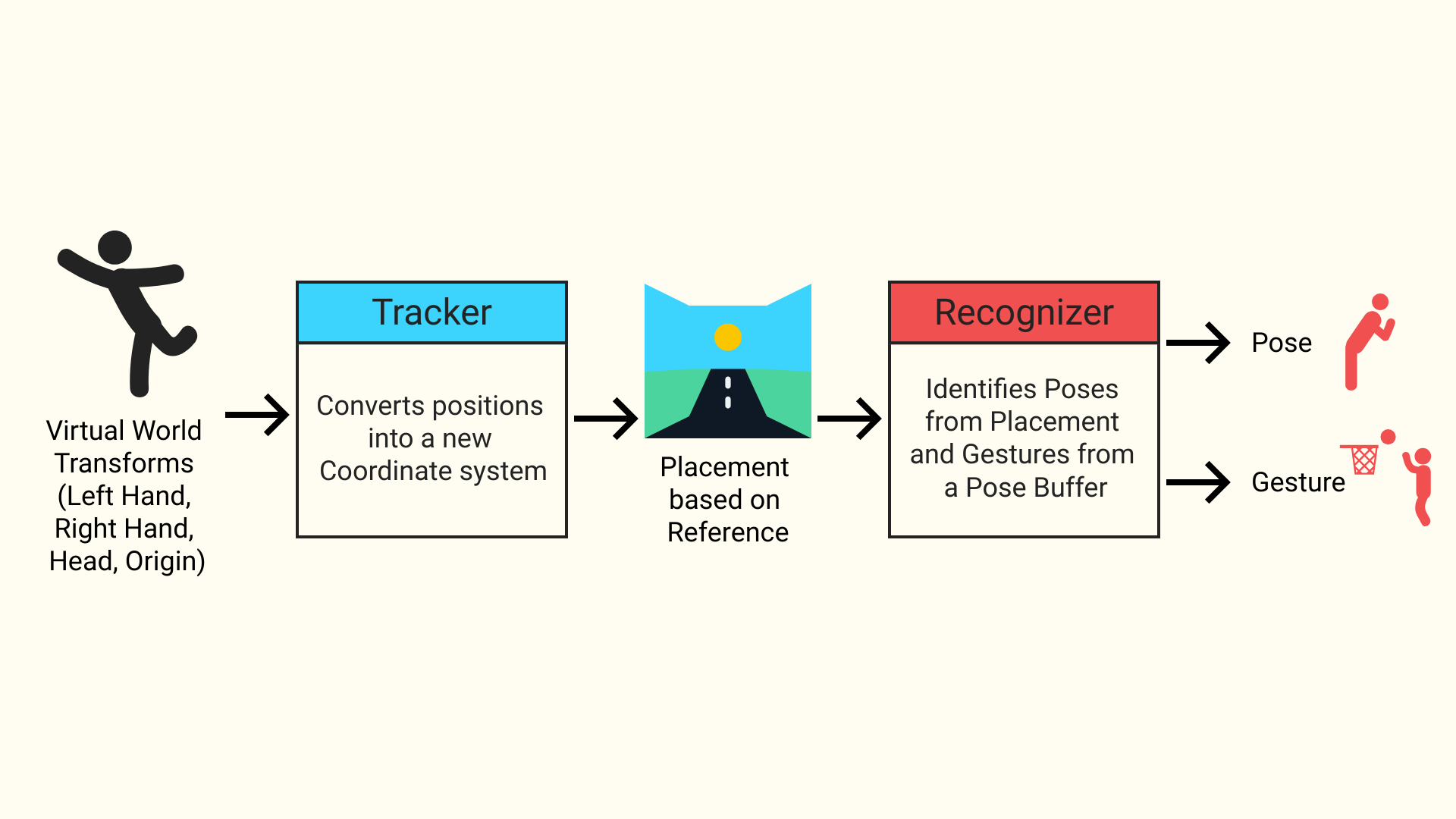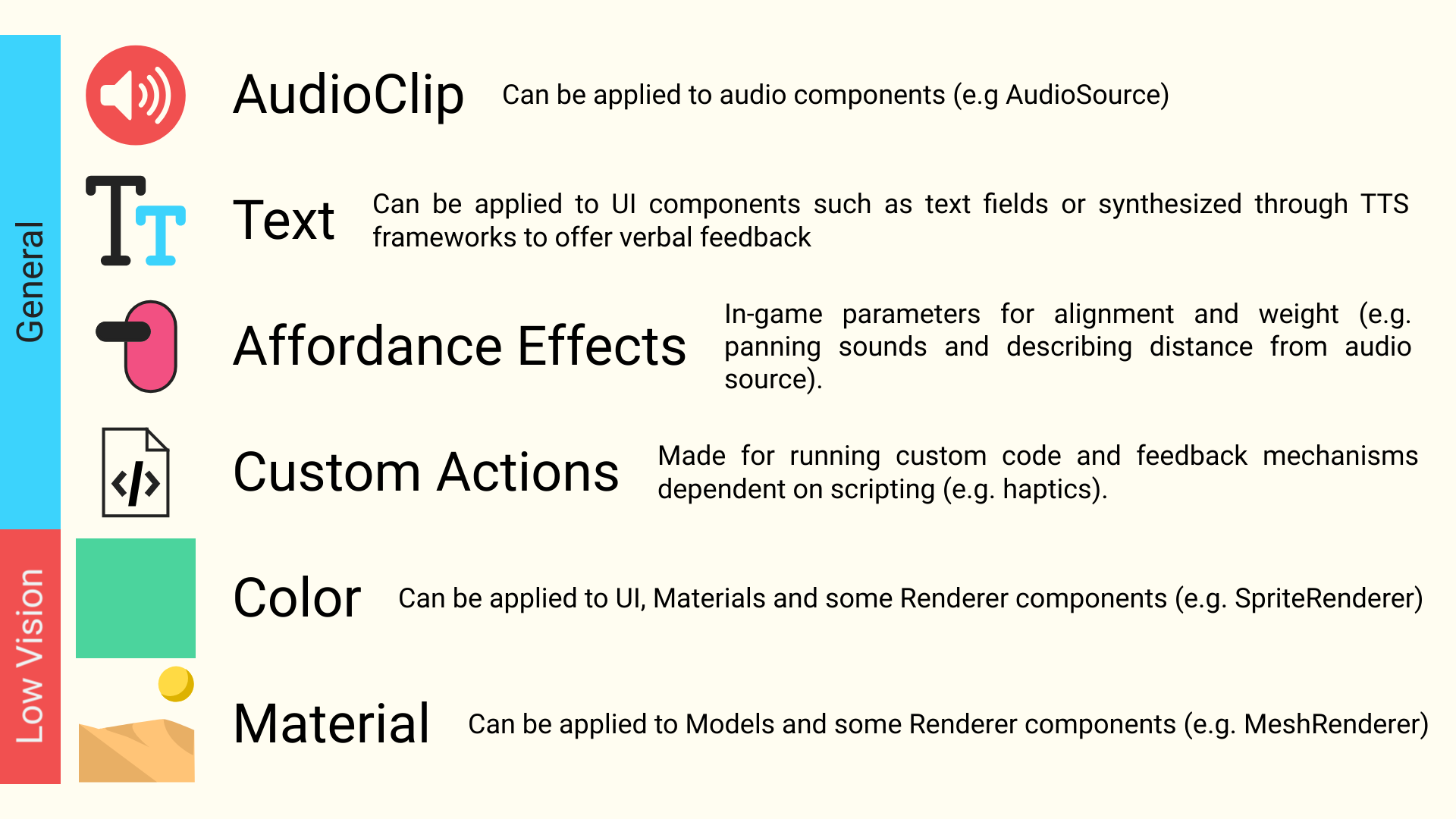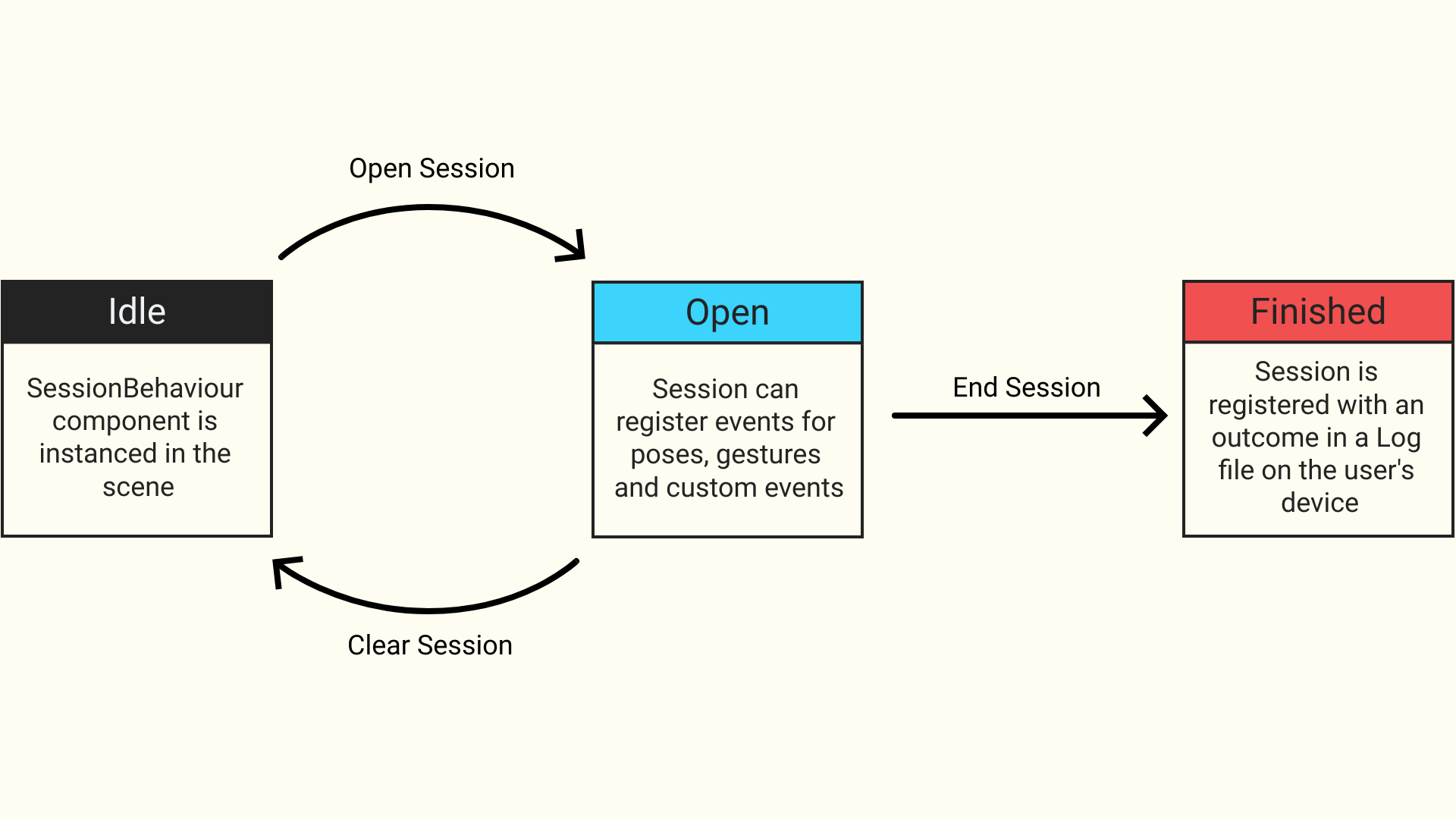EdKit is a special Unity package in developing VR games for People with Visual Impairments (PVI) that work with Left-Right discrimination concepts, an useful spatial orientation concept that allows further development of their cognitive and motor skills.
Via Unity Package Manager:
- In Unity, go to "Window" -> "Package Manager"
- Click the + button, and select "Add package from git URL..."
- Enter the URL of this repository:
The package offers an abstraction layer that combines Player Gestures, Affordances and Analytics by using basic Unity structures as a scripting-free way to use this package in your game at the cost of limited functionality. On the other hand, Scripting allows you deeper customization for implementing poses and gestures while still maintaining compatibility with the package's custom components.
For the gesture model, basic structures were created to encapsule position and orientation references for objects in a new coordinate system that's based on the egocentric reference generated by TrackerBehaviour, which uses 4 reference Transforms:
- Head (or the actor's body)
- Left Hand (or equivalent)
- Right Hand (or equivalent)
- The actor's respective origin (e.g. XR Origin)
TrackerBehaviour generates a new Placement structure, containing orientations for the head and hands. The Orientation for each element is composed of a Position and a Rotation structures, which are encapsulations that add new utility methods for comparisons based on an Axis, simplifying the identification process for left/right, above/below, front/back while also having a deadzone area for the spatial reference.
Poses can process Placement objects and give a score based on how precise the Placement is to itself, while Gestures uses a list of poses in it's scoring process. Both of these are part of RecognizerBehaviour's implementation, which receives a Placement and fires events after identifying a pose (onPoseRecognized) or a gesture (onGestureRecognized)
To describe a new pose, you can:
- Via Scripting: Create a new instance of
Poseor conform to theIPoseinterface and define the criteria for howPlacementshould be evaluated. - Via Editor: Create a new
PoseDataScriptable Object, defining manuals the bounds for each orientation.
As for a new gesture, the options are:
- Via Scripting: Create a new instance of
Gestureor conform to theIGestureinterface and define the crita for how the sequence of poses should be evaluated. - Via Editor: Create a new
PoseDataScriptable Object, setting a list ofPoseDataelements in order to define a new gesture.
To use Gesture Recognition:
- Create a new
GameObjectwith theTrackerBehaviourandRecognizerBehaviourcomponents. - Connect
RecognizerBehaviour.Registermethod toonUpdatePlacementevent ofTrackerBehaviour - Assign the Transforms for all 4 references.
- Create a new component to seed the gestures and poses tracked by the
RecognizerBehaviourvia theSetPosesandSetGesturesmethods (it's recommended to declare a variable for theRecognizerBehaviourso it can be assigned directly during Awake/Start). - Add this new seeder component to a GameObject and assign the
RecognizerBehaviourto this new component.
For the feedback system, we have a structure based on Affordances: a representation of multimodal feedback in the game that is applied simultaneously through different channels, which can include:
Affordances can be applied via an AffordanceBehaviour, which is responsible for getting the representations of the Affordance and firing events for each representation.
To create a new affordance, you can:
- Via Scripting: Create a new instance of
Affordanceor conform to theIAffordanceinterface and define which elements should be returned. - Via Editor: Create a new
AffordanceDataScriptable Object and define each feedback type manually.
To use Affordances:
- Add a new
GameObjectwith anAffordanceBehaviourcomponent. - Wire each event to it's respective listeners.
For tracking game events to build the Analytics model, the package takes advantage of JSON serialization to store pose events and gesture events, as well as any serializable type as a custom event. Everything is stored into Session, which also contains information about the date and time when the game session was played, the user who played it, in which scene this happened and the outcome of the session.
This model is managed by SessionBehaviour: a MonoBehaviour component responsible for managing the lifecycle of a session: To start, the developer opens a session, passing identifiers for the user and scene. Then, events are registered using any of the methods declared. When the session ends, the developers closes the session with the session's outcome, which then gets saved into a log file that's stored on the player's device and can be extracted and interpreted by custom tools, such as dashboard visualizations.
To use Game Analytics:
- Create a new
GameObjectwith aSessionBehaviourcomponent. - Assign the component to any reference field or
UnityEventreference to call it's methods.
This package is still a work-in-progress and the API may have breaking changes until it reaches stability, so use it at your own discretion.



